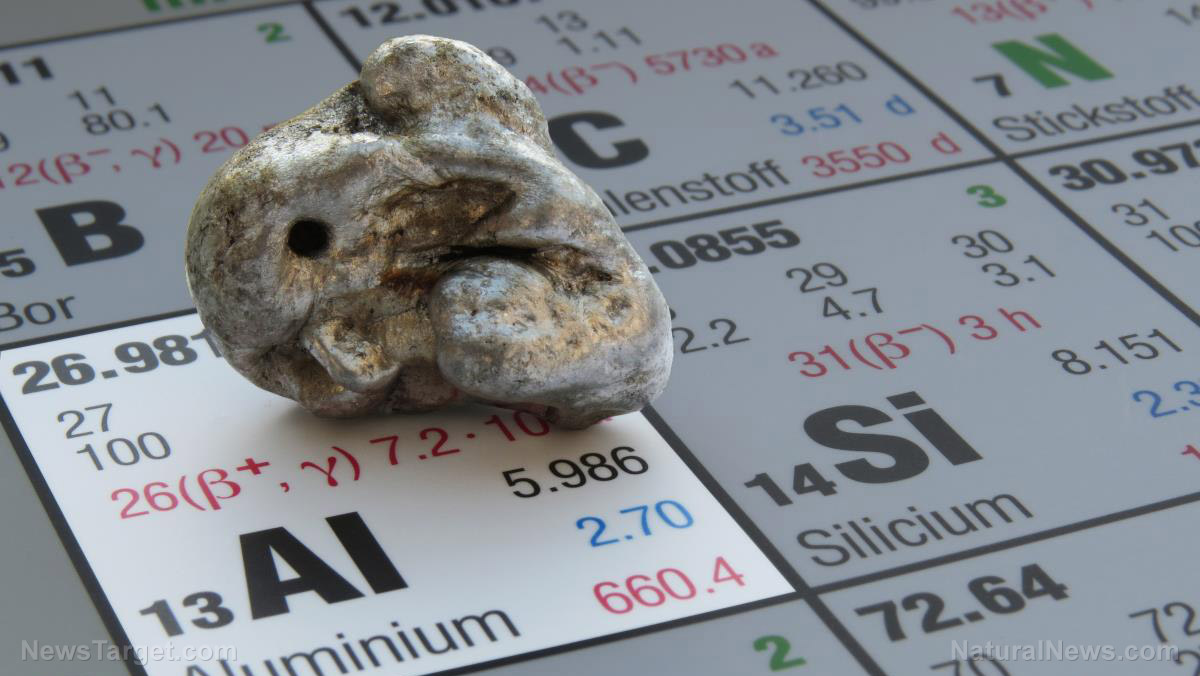
The Saarland University team applied their coating process to a lattice substrate of aluminum or polymer foam. The resulting metallic foams display high porousness and excellent stability.
They based their foams on the structure of a bone. Almost as strong as steel but much lighter in weight, bones possess a sturdy outer shell that encases a porous network of tissue. This type of structure minimizes the use of materials and decreases weight.
The newly developed metallic foams copy the natural structure of a human bone. Their open-cell structures also resemble porous sponges.
While lightweight metal foams are already available on the market, they cost a lot of money to manufacture. These materials also lack sufficient stability and strength to withstand various applications. (Related: Barbules and velcro: Researchers study birds for inspiration to develop new adhesives and aerospace materials.)
Potential uses for open-cell metal foams
The Saarland researchers came up with a way to reinforce metal foams. By coating the individual struts of the open-cell lattice, Stefan Diebels and Dr. Anne Jung managed to increase the strength and stability of the exterior.
They initially tested the coating technique on aluminum foams before switching to polyurethane, which are less expensive. Their treated plastic foams display impressive sturdiness.
The treated open-cell metal foams can be used in barriers that protect against shock waves caused by an explosion. The foams can "swallow" the sound and pressure waves of underwater detonations.
Such barriers can also shield delicate marine organisms from the harmful effects of human activities.
Lightweight construction also stand to benefit from these metal foams. Building the load-bearing structures of ground vehicles and aircraft out of metal foams would keep their weight down while ensuring that the parts possess sufficient strength.
“They can be installed as reinforcing struts in the bodywork, while also providing impact protection,” Jung explained. “The struts can take up large amounts of energy and are able to absorb the force of a collision when parts of the porous core fracture under impact.”
The porosity, heat resistance, and absorbing qualities of the metal foams may prove useful in applications like architecture, chemical catalysts, electromagnetic screening, heat shields, shock absorbers, and sound-absorbing cladding.
Customizing a metal foam for an application
The treatment process for metallic foams uses an electroplating bath to coat the foam in an ultra-thin layer. The Saarland research team overcame the challenge of making sure the whole interior receives a uniform coating.
The metallic foam naturally exhibits the same electricity-diverting effect as a Faraday cage. When the interior gets surrounded by electrically-conductive material, the current and the coating are both diverted away from the interior. The internal lattice ends up without the coating that would have increased its strength.
To resolve this, Jung selected a type of anode cage that made it possible to apply an even layer of nano-crystal coating on the entire lattice. The technique also works on foams with sizable surface areas and show compatibility with industrial production.
The Saarland researchers are some of the world's foremost experts on porous metal lattices and their micro-mechanical characterization. They evaluated the structure of the foam, the shape of the pores, and the curvature of the struts.
They showed how to customize open-cell metal foams for a specific application. By changing the composition of the coating, the thickness of the layer, and the size of the pores, the researchers successfully altered the properties of the materials.
Applying a nickel coating on open-cell metal foams gave them great strength. Copper increased their ability to conduct heat, while silver turned them into antibacterials and gold made them look nice.
Sources include:
Please contact us for more information.






















